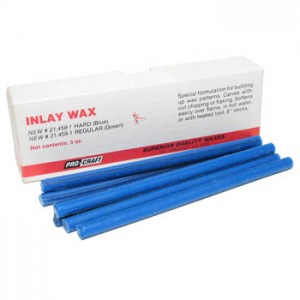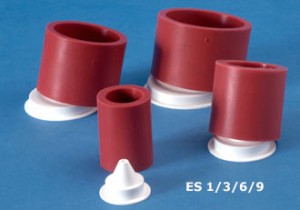Candelilla Wax: Is obtained from plants. It is added to replace partially or completely the carnuba wax. It is smoother than carnuba wax and its melting point is lower than carnuba wax.
Ceregin wax: It is replaced in place of paraffin wax in order to modify the toughness and carving characteristics of the wax.
GUMDUMMAR: Is a natural resin. It is added to paraffin to improve the smoothness in molding and render it more resistant to flaking. It also increases the toughness of the wax. It improves the smoothness and lustre of the surface
In modern inlay waxes, Carnuba wax is often replaced with certain synthetic waxes which are compatible with paraffin wax. Atleast 2 waxes of this type can be used.
Is a complex nitrogen derivative of higher fatty acids
Is composed of esters of acids derived from Montana wax
DESIRABLE PROPERTIES:
1. When softened the wax should be uniform .
2. There should be no flaking or chipping when trimmed or carved at room temperature.
3. It should be sufficiently plastic at a tem. Slightly above mouth temp. and on the other hand it should become rigid when cooled to mouth temp.
4. It should vaporize at 5000C leaving no residue
5. Colour should be contrast with die and tooth
6. Should be dimensionally stable and rigid (But all are dimensionally unstable)
All Inlay waxes have 2 disadvantages
Thermal change in dimension
Tendency to distort with passage of time.
MANIPULATION:
1. Dry heat is preferred to wet heat
2. Ingredients leak into water, so loss of properties
3. Inclusion of droplets of water in the pattern could splatter on flaming. This water inclusion causes distortion of the pattern during thermal changes.
DIRECT PATTERN:
1. For one or two surface inlays.
2. Rapidly accessible areas
3. When pattern can be sprued to the tooth
4. Patient is co-operative
5. When preparation has no thin details
Advantages:
1. No. of errors incorporated will be less (because no. of steps involved is less and materials used is less)
2. Time saving
3. Less expensive
4. Better marginal adaptability
Technique:
Open method: Wax stick is softened uniformly it is kneeded . Cone is prepared from the wax this is kept in proximal box and uniform finger (digital) pressure is applied. Wax is allowed to cool by itself. No water should be used to cool – (It will lead to release of internal stress which will lead to distortion)
Closed Method: Here we use matrix band (no need to retract the gingiva) matrix is applied loosely without wedges. This is done to get feather edge of the gold.
Anatomic pour technique: Here template of the occlusal surface is made using cold cure acrylic or impression plaster before cavity preparation later after cavity preparation wax is filled and the template is plated above with uniform pressure.
Distortion of the wax result due to thermal changes and release of stresses. These stresses arise from
Occluded air
Change of shape during molding carving and removal of pattern
Time and temp. during storage
Follow the following methods to control stress and to produce an acceptable wax pattern.
1. Adopt wax to the die with as high dry heat as possible.
2. Adopt the wax and hold under pressure in the die until it cools
3. Avoid packing and pooling of the wax unless it is necessary when shaping the pattern. This is supposed to cause stresses to accumulate in the pattern.
4. Direct wax pattern has greater tendency of distortion than indirect one.
Immediate investment prevents distortion of wax pattern
INDIRECT WAX PATTERN:
Indications:
Multiple castings
Non-cooperative patients
Complex restorations
Access is difficult
Advantages:
Convenient
Chair side time is saved
More convenient to operator and patient
Disadvantages:
In corporation of errors are more
Cost involved is more
Overall time required is more
SPRUE FORMER:
The purpose of sprue former or sprue pin is to provide a channel through which molten alloy can reach the mold on an invested ring after wax has been eliminated
Types of sprue former:
I Metallic – Rigid or hollow Advantage: Rigid
II Non-metallic – wax – plastic / resins
Advantage: these are burnable and low thermal conductivity
Disadvantages: they are to be heated and then attached to pattern. This causes distortion of wax pattern.
Hollow metal sprue formers are better compared to solid sprue pins as they carry less heat to the pattern and provide firm attachment to the pattern.
II Type:
1. Direct sprue former
2. Indirect sprue former
III Type: Prefabricated sprue formers:
The length and diameter of sprue former depends to a large extent on
Type and size of pattern
Type of casting machine used
Dimension of the flask or ring in which casting is made

